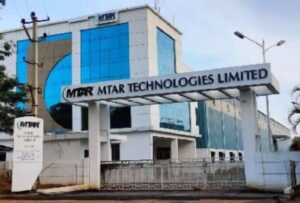1. At a Glance
India’s biggest health-tech middleman —sorry, “Third-Party Administrator”— just dropped its Q2FY26 results, and the numbers scream “growth with hiccups.” Medi Assist Healthcare Services Ltd (NSE: MEDIASSIST), with a market cap of ₹4,139 crore and a stock price of ₹557, plays the crucial but unsung role of connecting insurance companies, hospitals, and policyholders in the chaos of health insurance claims.
In Q2FY26, revenue soared 28.6% YoY to ₹232.55 crore, but profit took a nosedive — down 62.1% YoY to ₹8.07 crore. Yeah, that’s the equivalent of running a marathon only to trip at the finish line. Operating margins, once a healthy 21–24%, dropped to 17%. The P/E stands at a rather doctor-like 50.9x — diagnosing “expensive” with a side of optimism.
Return on equity? 17.4%. Return on capital employed? 18.7%. Both respectable — unless you remember this company’s role is to handleother people’s money.The promoters now own a measly 4.87%, down from nearly 40% a year ago, after Bessemer packed its bags. Institutions, however, love this patient — holding almost 70% of the equity.
Revenue up, PAT down, shareholding shaken — Medi Assist is the classic corporate version of a gym bro: bulking up the top line while skipping leg day on profits.
2. Introduction
Medi Assist Healthcare Services Ltd is what happens when insurance and IT have a baby — and the baby grows up to handle ₹14,500 crore worth of health premiums annually. The company doesn’t insure anyone itself; instead, it acts as the referee ensuring hospitals and insurers don’t strangle each other over claims.
Founded in 2000, Medi Assist has evolved from a boring paperwork processor into a tech-heavy ecosystem player, bridging 35 insurance companies, over 9,500 corporate clients, and nearly 19,000 hospitals. They’re everywhere — from corporate health policies to government healthcare schemes.
It’s not glamorous work. Nobody ever thanks the TPA after getting a hospital claim settled — but if they mess up, everyone’s angry. Yet, in this unsexy corner of the insurance market, Medi Assist has quietly carved a monopoly-like niche with 26% share in India’s group health insurance market.
The IPO in January 2024 was a blockbuster — ₹1,172 crore raised via offer for sale. But post-listing, the stock pulled an “Ayushmann Khurrana movie”: strong debut, then reality kicked in. Profit dipped, promoter stake vanished, and an ED search in a subsidiary made headlines. Still, Medi Assist keeps hustling, acquiring competitors and building an AI-powered claims empire.
So, while your claim takes 7–10 business days, this company’s growth story is far from sick — it’s just going through post-listing puberty.
3. Business Model – WTF Do They Even Do?
Medi Assist is aThird Party Administrator (TPA)— basically the middleman who ensures your insurance company actually pays your hospital bill and doesn’t ghost you.
Here’s how it works:
- You fall sick.
- You land in a hospital (hopefully cashless).
- The hospital sends your details to the insurer.
- The insurer forwards them to Medi Assist.
- Medi Assist checks the paperwork, approves the claim, and pays the hospital.
They make money by charging a fee per claim or as a percentage of premiums handled. Their client base includes insurance companies like Star Health, ICICI Lombard, and corporate giants that buy group insurance for employees.
Subsidiaries:
- Medi Assist TPA(core engine, 89.87% of revenue)
- Medvantage TPAandRaksha TPA(acquired units)
- IHMS,Mayfair India/UK/Philippines, etc., offering call center and claims management services
Recent Expansion:In July 2025, Medi Assist’s subsidiary acquiredParamount TPA, adding ₹4,000 crore in premium processing power. That’s like swallowing your competitor’s lunch and then sending them the bill.
The company’s model thrives onscale, tech, and data analytics— the more claims they process, the more profitable (in theory) it becomes. But lately, margins are thinning like an overused hospital blanket.
4. Financials Overview
Let’s slice the Q2FY26 numbers like a surgeon with precision (figures in ₹ crore):
| Metric | Latest Qtr (Sep’25) | YoY Qtr (Sep’24) | Prev Qtr (Jun’25) | YoY % | QoQ % |
|---|---|---|---|---|---|
| Revenue | 232.55 | 180.77 | 190.56 | 28.6% | 22.0% |
| EBITDA | 39.71 | 38.45 | 42.01 | 3.3% | -5.5% |
| PAT | 8.07 | 21.01 | 22.63 | -61.6% | -64.3% |
| EPS (₹) | 1.13 | 2.99 | 3.18 | -62.2% | -64.5% |
Annualised EPS = ₹1.13 × 4 =₹4.52, which gives animplied P/E of 123x— not exactly cheap for a company that just lost 62% of its quarterly profit.
Commentary:The revenue story is strong — thanks to acquisitions and scaling, but profits? They’ve gone for a long walk. Depreciation and interest costs ballooned due to acquisitions (Paramount and others), squeezing the bottom line. It’s like eating more but burning fewer calories.
5. Valuation Discussion – Fair Value Range Only
Let’s diagnose Medi Assist’s fair value with three methods (figures
in ₹ crore).
a) P/E Method:
- TTM EPS = ₹11.55
- Industry average P/E = 43.8
- Current P/E = 50.9
- Applying reasonable range (35x–45x):→ Fair Value Range = ₹404 to ₹520 per share
b) EV/EBITDA Method:
- EV = ₹4,316 cr
- EBITDA (TTM) = ₹162 cr
- EV/EBITDA = 26.6x
- Industry comfort zone = 18x–22x→ Fair EV/EBITDA Range = ₹2,900 – ₹3,600 cr→ Per Share Fair Value ≈ ₹390 – ₹490
c) DCF (Simplified):Assume:
- FCF (FY25) = ₹138 cr
- Growth = 12% for 5 years, terminal 4%, discount rate 10%→ DCF Range = ₹4,100–₹4,600 cr → ₹550–₹610 per share
🩺 Educational Verdict:Fair Value Range =₹400–₹600 per share
Disclaimer:This fair value range is for educational purposes only and is not investment advice.
6. What’s Cooking – News, Triggers, Drama
- Paramount TPA Acquisition (July 2025):Medi Assist completed the ₹4,124.4 million acquisition of Paramount, adding ₹4,000 crore in premiums under management. Translation: They now handle almost everyone’s hospital bills except your mom’s WhatsApp group insurance scheme.
- Preferential Allotment (Oct 2025):Raised ₹198 crore from theMassachusetts Institute of Technology(yes,theMIT) and 238 Plan Associates at ₹535/share. Apparently, MIT doesn’t just do AI — it funds TPAs now.
- ED Search:A minor plot twist — Enforcement Directorate visited one subsidiary during the quarter. The company confirmed “no material impact.” (Which is corporate for “We served tea and biscuits, and everyone left happily.”)
- Boardroom Exit:Vishal Vijay Gupta resigned as Bessemer’s nominee director after Bessemer fully exited. The once-proud VC backer now walks off into the sunset.
- Performance:H1FY26 revenue ₹423.1 crore (+21.4%), EBITDA ₹81.7 crore, PAT ₹30.7 crore. Margins took a dip — because acquisitions, integration costs, and rising employee costs love to spoil parties.
Basically, Medi Assist is doing everything a company does before becoming a monopoly — buying rivals, raising foreign money, and pretending nothing weird happened when the ED came calling.
7. Balance Sheet
(Consolidated Figures in ₹ crore)
| Metric | Mar 2023 | Mar 2024 | Sep 2025 |
|---|---|---|---|
| Total Assets | 702 | 842 | 1,420 |
| Net Worth (Equity + Reserves) | 376 | 472 | 579 |
| Borrowings | 31 | 26 | 305 |
| Other Liabilities | 295 | 344 | 536 |
| Total Liabilities | 702 | 842 | 1,420 |
Sarcastic Diagnosis:
- Assets have doubled in 18 months — clearly, acquisitions come with a side ofasset bloat.
- Borrowings shot up 11× — somebody’s banker is having a great Diwali.
- Net worth is climbing steadily — at least the equity doesn’t look anaemic.

















